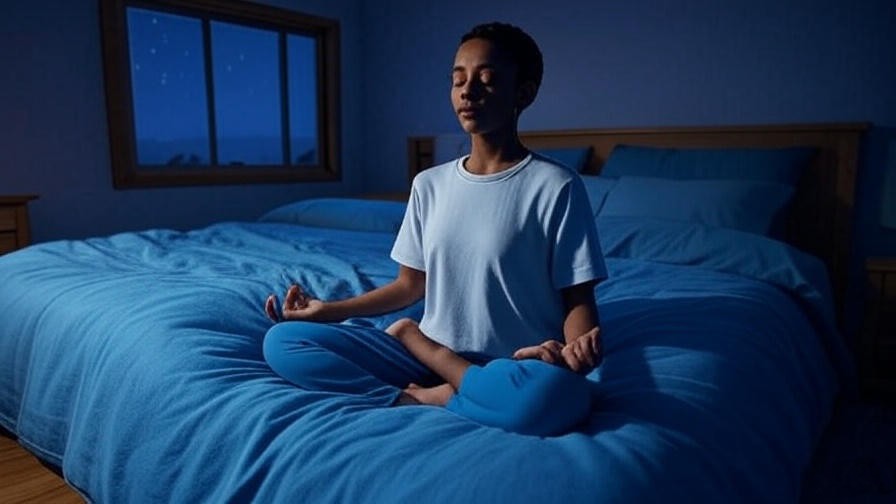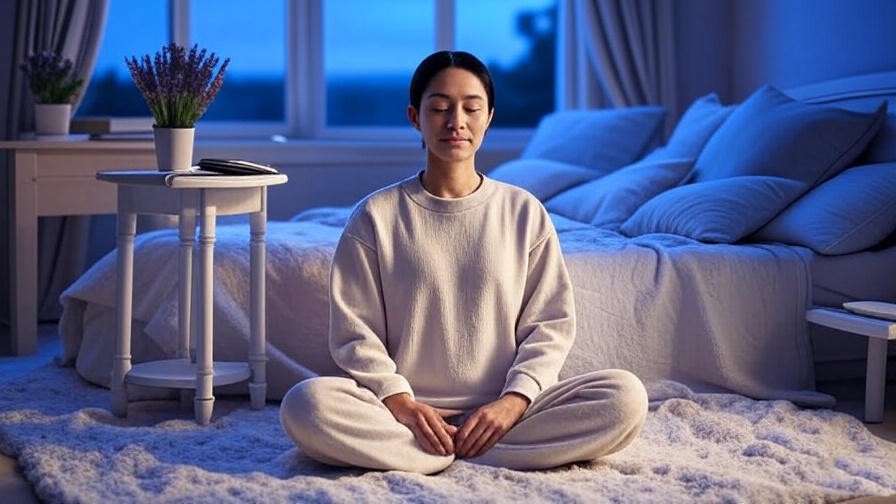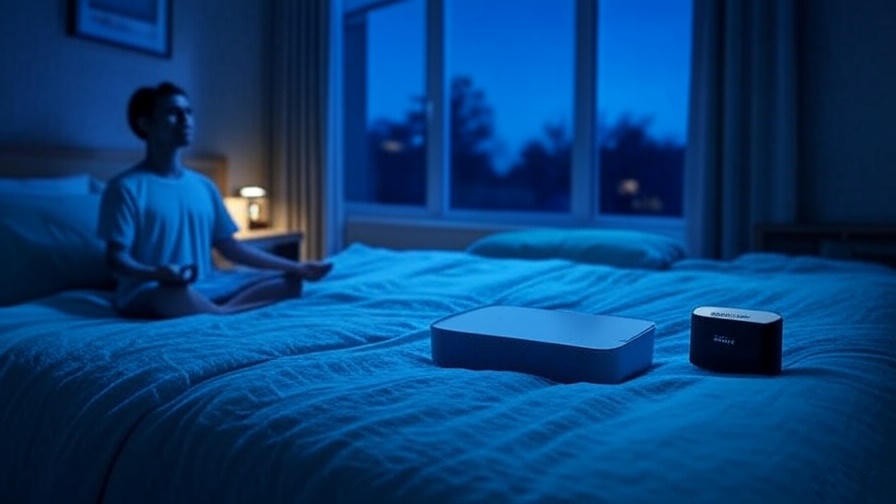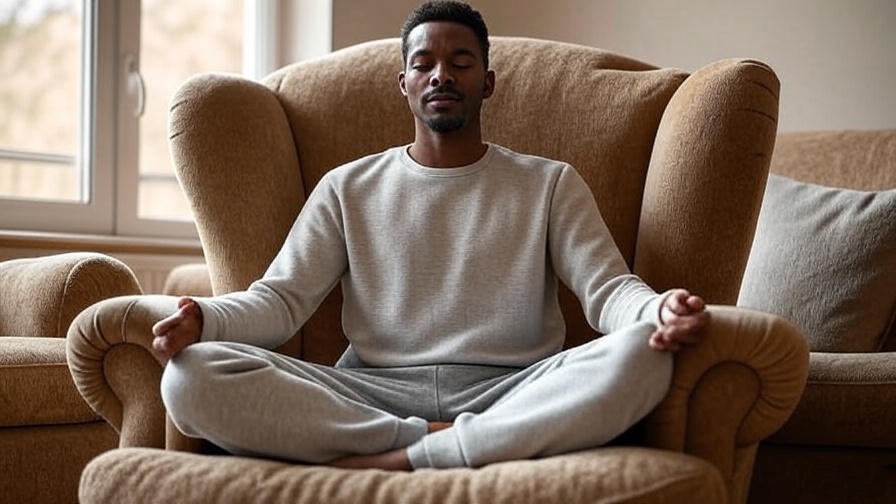Picture this: it’s 2 a.m., and you’re staring at the ceiling, your mind racing with tomorrow’s to-do list. The harder you try to sleep, the more elusive it becomes. Sound familiar? For millions, achieving calmful sleep—that deep, restorative rest that leaves you refreshed and energized—is a nightly struggle. Poor sleep doesn’t just steal your energy; it dims your mood, clouds your focus, and chips away at your holistic well-being. The good news? You can transform your nights with simple, science-backed nightly rituals. In this comprehensive guide, we’ll explore seven proven rituals to help you achieve calmful sleep, drawing on expert insights and practical strategies to rejuvenate your mind and body. Whether you’re passionate about meditation, happiness, or holistic wellness, these rituals will empower you to reclaim restful nights and vibrant days.
Why Calmful Sleep Matters for Your Health and Well-Being
The Science of Sleep and Its Role in Holistic Wellness
Sleep is the cornerstone of physical, mental, and emotional health. According to the National Sleep Foundation, adults need 7–9 hours of quality sleep nightly to support immune function, heart health, and cognitive performance. During deep sleep, your body repairs tissues, strengthens immunity, and regulates hormones, while your brain consolidates memories and processes emotions. A 2020 study from Harvard Medical School found that consistent, restful sleep reduces stress hormones like cortisol, fostering emotional resilience and mental clarity—key pillars of holistic well-being.
For those invested in meditation and happiness, calmful sleep amplifies the benefits of mindfulness practices. It creates a feedback loop: better sleep enhances meditation’s calming effects, and meditation promotes deeper rest. Without quality sleep, stress accumulates, mood dips, and even the joy of daily life feels out of reach. Prioritizing calmful sleep isn’t just about rest—it’s about unlocking your potential for a happier, healthier life.
Common Barriers to Achieving Calmful Sleep
Why is calmful sleep so hard to achieve? Modern life throws up countless obstacles: stress from work or relationships, overstimulation from screens, irregular schedules, and poor sleep hygiene. For example, scrolling through social media before bed exposes your eyes to blue light, which suppresses melatonin production by up to 50%, according to a 2017 study in Scientific Reports. Irregular bedtimes disrupt your circadian rhythm, while a cluttered bedroom or noisy environment signals your brain to stay alert. These barriers aren’t just inconveniences—they undermine your physical health, mental clarity, and emotional balance. The rituals in this article are designed to tackle these challenges head-on, offering practical solutions rooted in science and holistic principles.
What Makes a Nightly Ritual Effective for Calmful Sleep?
Understanding the Principles of Sleep Hygiene
Sleep hygiene refers to habits and environments that promote restful sleep. The American Academy of Sleep Medicine emphasizes consistency, relaxation, and a sleep-friendly environment as core principles. Effective nightly rituals align with these by signaling to your body and mind that it’s time to wind down. For example, a consistent bedtime routine trains your brain to anticipate sleep, while calming activities like meditation lower heart rate and stress levels. These practices aren’t just habits—they’re intentional steps toward creating a sanctuary for rest.
How Rituals Align Body and Mind for Rest
Nightly rituals work by bridging the mind-body connection. When you engage in calming activities, your body reduces cortisol and increases melatonin, the hormone responsible for sleep. Dr. Michael Breus, a clinical psychologist and sleep expert, notes that rituals “create a psychological cue that tells your brain it’s safe to rest.” This aligns perfectly with holistic practices like meditation, which calm the nervous system and prepare you for deep, restorative sleep. By incorporating mindfulness, relaxation, and consistency, rituals transform your pre-sleep routine into a powerful tool for calmful sleep.
7 Proven Nightly Rituals for Calmful Sleep
Ritual 1: Create a Digital Detox Hour

Screens are a major culprit in sleep disruption. The blue light emitted by phones, tablets, and laptops suppresses melatonin, delaying sleep onset. A 2019 study in Sleep Medicine found that avoiding screens 60 minutes before bed improved sleep quality by 30%. To create a digital detox hour:
- Turn off devices: Power down phones, tablets, and computers at least an hour before bed.
- Use alternatives: Replace screen time with calming activities like reading a physical book or listening to soothing music.
- Try blue-light-blocking glasses: If you must use devices, wear glasses designed to filter blue light.
Tip: Swap scrolling for a gratitude journal. Writing three things you’re thankful for each night boosts positivity and aligns with happiness goals, setting the stage for calmful sleep.
Ritual 2: Practice a Guided Sleep Meditation

Meditation is a powerful tool for calming the mind and easing into sleep. A 2015 meta-analysis in JAMA Internal Medicine found that mindfulness meditation improved sleep quality in 80% of participants with insomnia. Guided sleep meditations, which often include body scans or visualization, help you release tension and quiet racing thoughts. Here’s how to start:
- Choose a resource: Apps like Calm, Headspace, or Insight Timer offer free guided meditations tailored for sleep.
- Set the mood: Dim the lights and lie in bed to enhance relaxation.
- Practice regularly: Even 10 minutes nightly can make a difference.
Expert Insight: “Meditation rewires your brain for rest by activating the parasympathetic nervous system,” says Dr. Sara Lazar, a neuroscientist at Harvard. This ritual not only promotes calmful sleep but also deepens your meditation practice.
Ritual 3: Establish a Consistent Sleep Schedule
Your body thrives on routine. A consistent sleep schedule aligns your circadian rhythm, making it easier to fall asleep and wake up refreshed. A 2021 study in Nature Communications found that irregular bedtimes increase the risk of poor sleep by 40%. To build this ritual:
- Set fixed times: Choose a bedtime and wake-up time you can stick to daily, even on weekends.
- Plan backward: Count back 7–9 hours from your wake-up time to determine your ideal bedtime.
- Be patient: It may take 2–3 weeks for your body to adjust.
Example: Sarah, a 34-year-old teacher, struggled with erratic sleep due to late-night grading. By committing to a 10:30 p.m. bedtime and 6:30 a.m. wake-up, she reported feeling more energized within a month.
Ritual 4: Design a Calming Bedroom Environment
Your bedroom should be a sanctuary for sleep. A cluttered, bright, or noisy space can keep your brain on high alert. The National Sleep Foundation recommends optimizing your environment to promote calmful sleep. Here’s how:
- Control lighting: Use blackout curtains or a sleep mask to block light.
- Invest in comfort: Choose a supportive mattress and breathable bedding.
- Incorporate aromatherapy: A 2018 study in Complementary Therapies in Medicine found that lavender essential oil reduced sleep latency by 15%. Use a diffuser or pillow spray.
Checklist:
- Temperature: 60–67°F (15–20°C)
- Noise: Use a white noise machine or earplugs
- Clutter: Keep surfaces clear to reduce mental stress
Ritual 5: Engage in Gentle Evening Stretching or Yoga

Physical tension can prevent restful sleep. Gentle stretching or yoga relaxes muscles and calms the nervous system. A 2020 study in Journal of Clinical Sleep Medicine found that yoga improved sleep quality in 65% of participants. Try this 10-minute sequence:
- Child’s Pose: Kneel, sit back on your heels, and stretch your arms forward for 1–2 minutes.
- Cat-Cow Stretch: Flow between arching and rounding your back for 1 minute.
- Legs-Up-the-Wall: Lie with legs elevated against a wall for 5 minutes to reduce stress.
This ritual not only promotes calmful sleep but also aligns with holistic wellness by fostering mind-body connection.
Ritual 6: Sip a Soothing Herbal Tea
A warm, caffeine-free beverage can signal your body to relax and prepare for sleep. Herbal teas like chamomile, valerian root, or passionflower have been shown to promote calmful sleep. A 2017 study in Phytotherapy Research found that chamomile tea improved sleep quality in 60% of participants with sleep disturbances. Here’s how to incorporate this ritual:
- Choose the right tea: Opt for chamomile, valerian, or peppermint, which have calming properties.
- Time it right: Sip your tea 30–60 minutes before bed to avoid nighttime bathroom trips.
- Create a ritual: Pair tea-drinking with another calming activity, like reading or journaling.
Caution: Avoid caffeinated teas (e.g., green or black tea) or sugary drinks, as they can disrupt sleep by stimulating your nervous system.
Ritual 7: Journal Your Thoughts to Clear Your Mind
A racing mind is a common barrier to calmful sleep. Journaling helps offload worries, reducing mental clutter and anxiety. A 2018 study in Journal of Experimental Psychology found that writing down thoughts before bed reduced sleep onset time by 20%. To make journaling a nightly ritual:

- Use prompts: Write about “What went well today?” or “What can I let go of?” to foster positivity.
- Keep it simple: Spend 5–10 minutes jotting down thoughts in a notebook by your bedside.
- Stay consistent: Make journaling a nightly habit to signal your brain that sleep is near.
Case Study: Emma, a 40-year-old marketing manager, struggled with work-related stress keeping her awake. After adopting a nightly journaling habit, she reported falling asleep faster and waking up feeling more refreshed within two weeks.
How to Personalize Your Nightly Rituals for Maximum Effectiveness
Assessing Your Sleep Needs and Lifestyle
Everyone’s sleep needs are unique, shaped by lifestyle, stress levels, and health conditions. To tailor your rituals, start by evaluating your current sleep habits. Keep a sleep diary for one week, noting:
- What time you go to bed and wake up
- How long it takes to fall asleep
- Any disruptions (e.g., noise, stress, or caffeine)
This data helps identify pain points, like late-night screen time or an inconsistent schedule, so you can choose rituals that address them. For example, if stress is a major issue, prioritize meditation and journaling.
Combining Rituals for a Holistic Routine
Combining rituals creates a powerful, holistic routine that maximizes calmful sleep. Here’s a sample timeline for a 60-minute pre-sleep routine:
- 9:00 PM: Digital detox—put away devices and start a gratitude journal.
- 9:15 PM: Sip chamomile tea while reading a calming book.
- 9:30 PM: Do a 10-minute yoga sequence in dim lighting.
- 9:45 PM: Practice a guided sleep meditation in bed.
- 10:00 PM: Lights out for sleep.
This routine blends physical, mental, and environmental cues to prepare your body for rest. Experiment with combinations to find what feels natural and effective for you.
Adapting Rituals for Different Life Stages
Your sleep needs evolve with your lifestyle. Here’s how to adapt rituals for specific circumstances:
- Parents: If young children disrupt your schedule, focus on short rituals like 5-minute meditations or quick journaling sessions.
- Students: Combat late-night study sessions with a digital detox and a consistent bedtime to boost focus and retention.
- Shift Workers: Use blackout curtains and white noise to create a sleep-friendly environment, even during daytime rest.
- Travelers: Pack a portable lavender spray or download offline meditation tracks to maintain rituals on the go.
Tip: During stressful periods, like exams or deadlines, double down on relaxation-focused rituals like yoga or tea to counter heightened anxiety.
Common Mistakes to Avoid When Building a Sleep Routine
Even the best rituals can fail if you fall into common traps. Here are five mistakes to avoid, along with solutions:
- Inconsistent Timing: Going to bed at different times confuses your circadian rhythm. Solution: Stick to a fixed bedtime, even on weekends.
- Overstimulating Activities: Watching intense TV shows or checking work emails before bed keeps your brain alert. Solution: Replace with calming activities like reading or stretching.
- Ignoring Mental Health: Unaddressed stress or anxiety can sabotage sleep. Solution: Incorporate journaling or meditation to process emotions.
- Poor Sleep Environment: A noisy or bright bedroom disrupts rest. Solution: Use blackout curtains, earplugs, or a white noise machine.
- Overloading Your Routine: Trying too many rituals at once can feel overwhelming. Solution: Start with 1–2 rituals and gradually add more.
Avoiding these pitfalls ensures your nightly routine is sustainable and effective, paving the way for calmful sleep.
The Long-Term Benefits of Calmful Sleep
Improved Mental and Emotional Health
Calmful sleep is a game-changer for mental and emotional well-being. A 2022 study in Sleep journal found that consistent, high-quality sleep reduced anxiety symptoms by 25% and improved mood in 70% of participants. By lowering cortisol and boosting serotonin, restful sleep enhances emotional resilience, making it easier to handle stress and find joy in daily life. For those who practice meditation, quality sleep deepens mindfulness, creating a virtuous cycle of calm and happiness.
Enhanced Productivity and Creativity
Sleep isn’t just rest—it’s a catalyst for productivity and creativity. A 2019 study in Nature showed that well-rested individuals performed 20% better on problem-solving tasks and reported higher creativity. During sleep, your brain processes information, strengthens neural connections, and draws inspiration from dreams—a key interest for our audience. Calmful sleep equips you to tackle work, hobbies, and personal goals with clarity and energy, aligning with your pursuit of happiness and growth.
Stronger Physical Health and Longevity
Quality sleep supports physical health in profound ways. The CDC reports that poor sleep increases the risk of obesity, diabetes, and heart disease by up to 30%. Conversely, calmful sleep regulates appetite, boosts immunity, and lowers blood pressure. A 2021 European Heart Journal study linked 7–8 hours of quality sleep to a 15% lower risk of cardiovascular events. By prioritizing sleep, you invest in long-term health and vitality, a cornerstone of holistic wellness.
FAQs About Achieving Calmful Sleep
Q1: How long does it take for nightly rituals to improve sleep?
A: Most people notice improvements within 2–4 weeks, according to the National Sleep Foundation. Consistency is key—stick with your rituals daily to see results.
Q2: Can I still achieve calmful sleep if I have insomnia?
A: Yes, but insomnia may require additional support. Rituals like meditation and journaling can help, but consult a sleep specialist for personalized strategies, such as cognitive behavioral therapy for insomnia (CBT-I).
Q3: Are there specific foods that promote calmful sleep?
A: Foods like almonds, kiwi, and tart cherries contain melatonin or magnesium, which support sleep. A 2017 study in Nutrients found that eating kiwi before bed improved sleep onset by 15%.
Q4: How do I stay consistent with my rituals during a busy schedule?
A: Prioritize short, flexible rituals like 5-minute journaling or sipping tea. Set reminders or pair rituals with existing habits (e.g., brushing your teeth) to stay on track.
Conclusion
Achieving calmful sleep is within your reach, and these seven proven nightly rituals—digital detox, meditation, consistent schedules, a calming bedroom, yoga, herbal tea, and journaling—offer a roadmap to transformative rest. By addressing common barriers and aligning with holistic wellness principles, these practices not only improve sleep but also enhance your mental clarity, emotional balance, and physical health. Start tonight by choosing one or two rituals that resonate with you, and build a personalized routine over time. Your journey to calmful sleep is also a step toward greater happiness and well-being. Try a ritual tonight and share your experience in the comments below—sweet dreams await!













